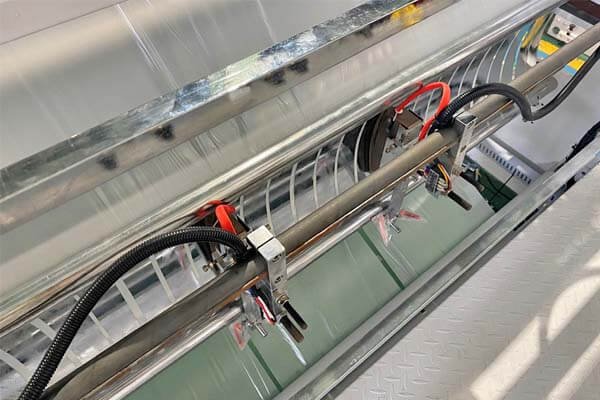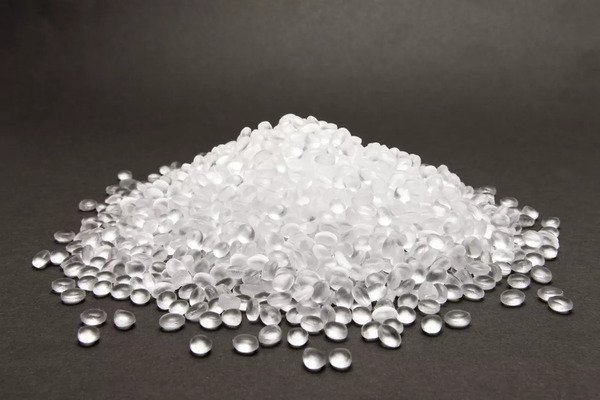
Have you ever wondered about the soft, flexible plastic used for so many everyday items? This material is everywhere, but most people don't know what it is or why it's used.
The six most common uses of Low-Density Polyethylene (LDPE)1 are packaging materials, flexible containers and bottles, household goods, wire insulation, agricultural films, and various industrial applications like liners and gaskets. Its unique properties make it extremely versatile.
LDPE is popular because it is flexible, tough, and resistant to moisture. These qualities make it a top choice for manufacturers across many industries. As machinery experts, we work with LDPE film every day. We see firsthand how its molecular structure allows it to be efficiently shaped into essential products, from simple grocery bags to specialized industrial liners. This versatility is the reason you encounter it so frequently.
This material's power comes from its unique molecular structure. LDPE has branched polymer chains that are not packed tightly together. This creates a lower density and much greater flexibility compared to other plastics like HDPE. That is why LDPE is perfect for products that need to be squeezed, stretched, or sealed. It is a reliable and cost-effective material for global manufacturing operations.
How is LDPE Used in Packaging Materials?
Packaging is the most common and visible application of LDPE. From the shopping bag you use for groceries to the film keeping your bread fresh, this material is a packaging workhorse.
In packaging, LDPE is mainly used to make flexible plastic bags, such as T-shirt bags, food bags, and garbage bags. It is also used for shrink wrap and stretch film for bundling products.
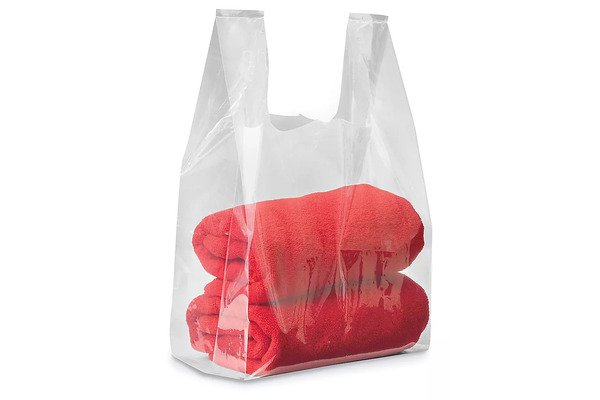
The properties of LDPE make it the perfect material for a wide range of packaging solutions. Its flexibility, strength, and low cost are exactly what manufacturers look for. In our field, we design machines specifically to handle these characteristics, turning large rolls of LDPE film into thousands of finished bags per hour.
Plastic Bags and Films
This is the largest single-use for LDPE. Its softness and strength make it ideal for bags that need to carry weight without tearing easily. The material can be made clear to showcase the product inside or colored for branding purposes.
- Shopping Bags: T-shirt bags and patch handle bags are lightweight and cost-effective.
- Food Packaging: Bread bags, frozen food bags, and zipper bags benefit from LDPE's non-toxic nature and moisture barrier.
- Courier Bags: LDPE's toughness and puncture resistance make it great for protecting goods during shipping. Our courier bag machines often add features like a permanent adhesive strip, which bonds well to LDPE.
Shrink and Stretch Wrap
LDPE's elasticity is perfect for industrial packaging.
- Shrink Wrap: When heated, this film shrinks tightly around a product, like a case of water bottles. It creates a secure and stable bundle.
- Stretch Wrap: This film is used to wrap and secure loads on pallets for shipping. It clings to itself and provides protection from dust and moisture.
Here is a simple breakdown of how LDPE properties match common packaging needs.
| Packaging Type | Key LDPE Property | Common Example |
|---|---|---|
| T-Shirt Bags | Flexibility & Tensile Strength | Grocery Store Carrier Bags |
| Food Storage Bags | Moisture Barrier & Food Safe | Bread Bags, Zipper Pouches |
| Industrial Stretch Film | Elasticity & Puncture Resistance | Pallet Wrapping |
| Courier Mailers | Durability & Water Resistance | E-commerce Shipping Bags |
Why is LDPE Ideal for Containers and Bottles?
When you need a container that is easy to squeeze, LDPE is an excellent choice. This characteristic is essential for many products we use in our daily routines.
LDPE is ideal for containers and bottles because it is highly flexible and has good chemical resistance. This makes it perfect for squeezable bottles2, like for sauces and lotions, and for storing certain mild chemicals.
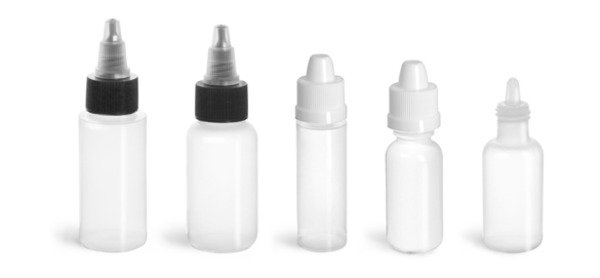
The "squeezability" of LDPE is its main advantage here. Other plastics like PET or HDPE are too rigid for applications where the user needs to dispense the product by squeezing the container. LDPE provides this functionality without cracking or losing its shape permanently.
Squeezable Bottles
Many personal care and food products rely on LDPE bottles. The material is durable enough to hold the contents securely but soft enough for easy dispensing. Common examples include:
- Shampoo and conditioner bottles
- Face wash and lotion tubes
- Condiment bottles for honey, ketchup, and mustard
Chemical Containers
LDPE also stands up well to many chemicals, particularly acids and bases. While it may not be suitable for strong solvents, its resistance makes it a safe choice for many lab and industrial applications. You often see it used for wash bottles in laboratories or containers for cleaning solutions.
What Household and Consumer Goods are Made from LDPE?
Beyond packaging, LDPE is found in many everyday items around the house. Its soft texture and durability make our lives a bit more convenient and safe.
Common household goods made from LDPE include plastic food wrap3, flexible lids for containers, components for children's toys, and soft floor mats. Its non-toxic and resilient nature makes it suitable for home use.

LDPE's versatility allows it to be processed into films, molded into solid objects, or used as a soft coating. This adaptability leads to its presence in various corners of our homes.
In the Kitchen
- Plastic Wrap: The thin LDPE film we use to cover food clings well to surfaces and creates a seal to maintain freshness.
- Flexible Lids: Many food storage containers come with LDPE lids because they create a tight, leak-resistant seal and are easy to put on and take off.
Around the Home
- Toys: LDPE is used for toy parts that need to be soft and durable, ensuring they are safe for children to play with.
- Liners and Mats: Its cushioning effect and water resistance make it great for shelf liners, drawer liners, and soft play mats for kids.
Why is LDPE a Good Insulator for Wires and Cables?
Electricity powers our world, but it must be safely contained. LDPE plays a critical, behind-the-scenes role in protecting us from electrical currents.
LDPE is an excellent electrical insulator because it has a high dielectric strength and resists moisture. This makes it a primary material for sheathing low-voltage electrical wires, telephone lines, and television cables.
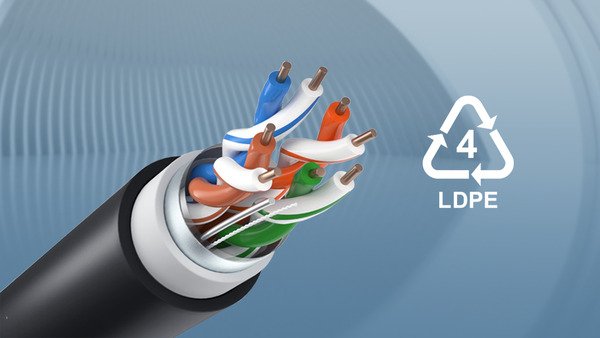
An insulator is a material that does not conduct electricity. LDPE is one of the most effective and widely used insulators in the wire and cable industry due to a combination of key properties.
Key Insulating Properties of LDPE
| Property | Simple Explanation | Importance for Wires |
|---|---|---|
| High Dielectric Strength | It effectively blocks the flow of electricity. | It prevents short circuits and electric shock. |
| Moisture Resistance | Water cannot easily pass through it. | It protects the metal wire from corrosion. |
| Flexibility | It can bend easily without breaking. | It allows cables to be installed around corners. |
Its combination of safety, durability, and low cost makes LDPE the standard choice for coating the wires that run through our walls and connect our communication devices.
What are the Main Agricultural Applications of LDPE?
In modern farming, controllling the growing environment is key to a successful harvest. LDPE films help farmers manage soil, water, and temperature with great efficiency.
In agriculture, LDPE is widely used for greenhouse films to trap heat, mulch films to control weeds, and flexible tubing for drip irrigation. Its durability and low cost are crucial benefits for farmers.

The use of plastics in agriculture, often called "plasticulture," has revolutionized food production. LDPE is at the forefront of this revolution.
Greenhouse and Mulch Films
LDPE films create microclimates that boost crop yields.
- Greenhouse Films: Large sheets of transparent LDPE are used to cover greenhouses. The film allows sunlight to enter but traps heat inside, protecting plants from cold weather and extending the growing season.
- Mulch Films: Placed over the soil, these films (often black) block sunlight to prevent weed growth, reduce water evaporation, and regulate soil temperature.
Drip Irrigation Tubing
Water conservation is vital in agriculture. LDPE is used to make the flexible tubes for drip irrigation systems. These tubes run along crop rows, delivering water directly to the plant roots. LDPE is ideal because it is flexible, resistant to agricultural chemicals and fertilizers, and can withstand outdoor conditions.
How is LDPE Used in Industrial Settings?
In factories and on construction sites, LDPE provides simple but effective solutions for protection, sealing, and containment.
Industrial uses for LDPE include tough protective liners for tanks and ponds, flexible gaskets for machinery, and heavy-duty dust covers to protect equipment. Its chemical resistance and toughness are highly valued.
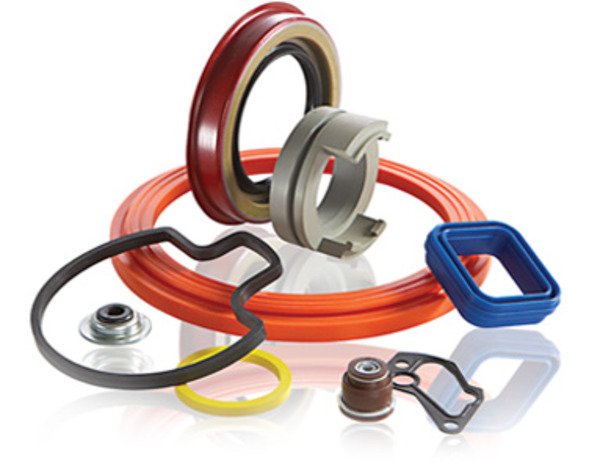
While not as visible as consumer packaging, industrial applications of LDPE are critical for operational safety and efficiency. This includes making heavy-duty bags, a specialty of some of our custom machines.
Protective Liners and Covers
- Heavy-Duty Bags and Covers: Large, thick LDPE bags are used to cover machinery and materials, protecting them from dust, moisture, and contamination. Our heavy-duty bag machines are engineered to create strong seals on thick LDPE films for these purposes.
- Pond and Canal Liners: Massive sheets of LDPE are used to line ponds, canals, and landfills. Its impermeability to water prevents leakage and protects the surrounding environment.
Gaskets and Seals
In its solid form, LDPE is used to create gaskets and seals. Because the material is soft, it can be compressed between two harder surfaces (like metal flanges) to create a tight seal. This prevents leaks in low-pressure piping systems and machinery.
Conclusion
LDPE's unique versatility makes it a cornerstone material in six key areas. From packaging and household goods to agriculture and wire insulation, its flexibility, toughness, and low cost provide practical solutions for countless modern products.
-
Explore the advantages of LDPE in manufacturing to understand its versatility and applications across various industries. ↩
-
Learn why LDPE is the preferred material for squeezable bottles, enhancing user experience and product safety. ↩
-
Discover the benefits of LDPE plastic food wrap, including its sealing properties and safety for food storage. ↩




